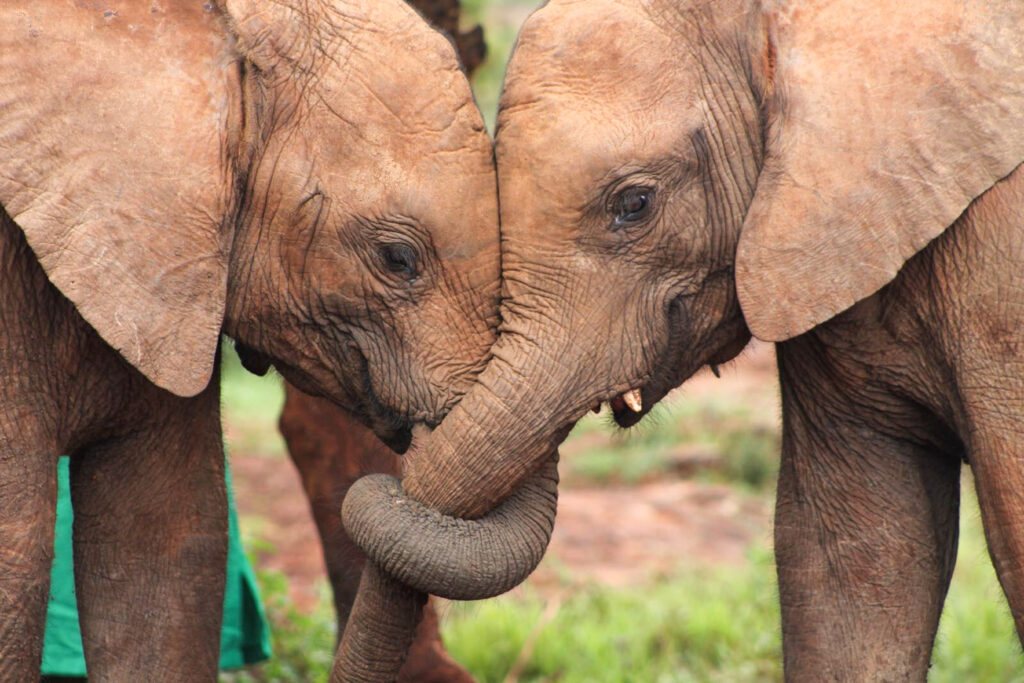
Names are part of something called “arbitrary communication”, wherein a sound represents an idea without imitating it. Where we have so far seen names used in nature, they are typically imitative—for instance, bottlenose dolphins and parrots mimic an individual’s signature call to get their attention. However, this differs from how humans refer to each other using an arbitrary or random sound chosen to represent an individual. The use of arbitrary language is a mark of linguistic complexity that moves beyond the limitations of imitative speech and expands expressive power into the potential exchange of intricate ideas, abstract concepts and symbolic thought.
Exciting new research has revealed that elephants may employ arbitrary communication and might refer to one another by name in a manner similar to humans, raising fascinating questions about the complexity of elephant cognition, communication, and the evolution of language.
A study published this June in Nature Ecology and Evolution details how scientists used machine learning to examine the acoustic properties of wild African elephant calls and demonstrate how specific calls predicted the intended recipient, regardless of how closely they resembled that individual’s vocalizations. Scientists from Colorado State University, Save the Elephants, ElephantVoices and the Amboseli Elephant Research Project studied recordings of female wild African savanna elephants, focusing on a specific type of call known as a rumble. This call is seen across many behavioral contexts and is unique to each individual elephant. Further, the variance between each individual’s rumble can be differentiated by elephants and humans alike.
Researchers studied rumbles made in contact, greeting and caregiving contexts to determine whether these elephants were using distinct vocal labels to address one another. They also investigated whether these labels were imitative or arbitrary, if different elephants shared the same label for the same individual, and if playbacks of a call to the intended recipient would elicit a behavioral response indicating recognition.
To investigate whether the acoustic features of a call could predict the intended recipient, researchers used a random forest, a complex machine learning model that incorporates multiple decision trees to improve accuracy and performance. This model correctly identified receivers 27.5% of the time, notably higher than would be expected by chance—for the sake of comparison, researchers created 10,000 randomly shuffled baseline models that correctly identified the receiver an average of 8% of the time.
To account for the possibility of imitative labeling, researchers examined whether there was significant similarity between vocalizations made by callers toward the same individual and that individual’s own vocalizations. They found no indication that these calls were imitative. Evidence as to whether all callers use the same label for one receiver was mixed—while researchers observed some overlap between different caller vocalizations directed at the same individual, it was not significant enough to prove or disprove that a group of elephants will use the same name for one individual. Researchers also studied individual elephants’ reactions to the playback of calls directed at them to see whether they recognized their own names, which they apparently did, either calling back or approaching the speaker, while calls intended for other elephants didn’t receive the same reaction.
Elephants’ potential use of arbitrary communication to identify one another is extraordinary for a number of reasons. First, it suggests a complexity of language surpassing most of what has otherwise been observed in nature outside of humans. Second, the ability to learn arbitrary novel sounds could be an indicator of abstract thought. Lastly, it raises questions about the kinds of evolutionary pressures that would produce this capability—researchers posited that complex social structures, characteristic to elephant populations, might account for the need to identify individuals by name. This could also open new avenues in human-elephant communication, introducing the exciting possibility that we may one day discover a way to “talk” to elephants, which could be instrumental in their conservation.
Works Cited
Pardo, M. A., Fristrup, K., Lolchuragi, D. S., Poole, J. H., Granli, P., Moss, C., Douglas-Hamilton, I., & Wittemyer, G. (2024). African elephants address one another with individually specific name-like calls. Nature Ecology & Evolution. Advance online publication. https://doi.org/10.1038/s41559-024-02420-w
Elephants have names for each other like people do, new study shows | ScienceDaily
Do elephants have names for each other? (nature.com)
Latest posts by AnnaKay Kruger (see all)
- Elephants May Call Each Other By Name - July 16, 2024
- Studying Episodic Memory through Food-Caching Behavior in Birds - April 16, 2024
- A Silent Killer: Tracking the Spread of Xylella fastidiosa - March 27, 2024
